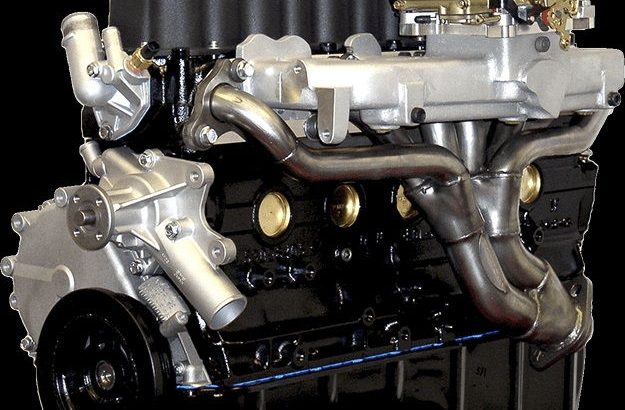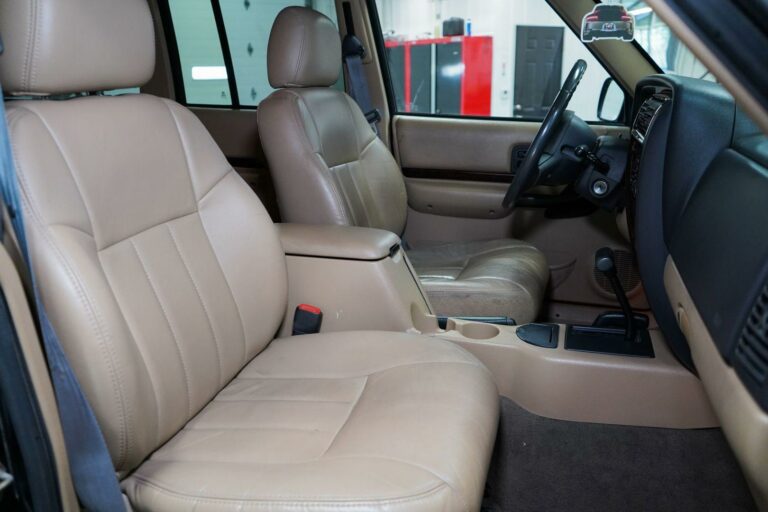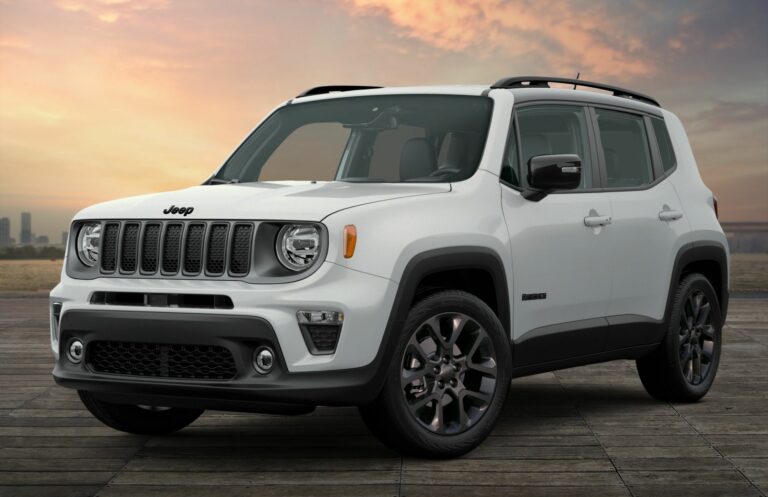1999 Jeep Grand Cherokee 4.0 Engine For Sale: A Comprehensive Guide to Reviving Your WJ
1999 Jeep Grand Cherokee 4.0 Engine For Sale: A Comprehensive Guide to Reviving Your WJ jeeps.truckstrend.com
Introduction: The Enduring Heart of a Legend
The 1999 Jeep Grand Cherokee, affectionately known as the WJ, marked a significant evolution for the iconic SUV. While it introduced a more refined ride and modern aesthetics, one constant remained its legendary heart: the 4.0-liter PowerTech Inline-Six (I6) engine. Renowned for its robust simplicity, impressive torque, and remarkable longevity, the 4.0L engine has become a cornerstone of Jeep’s legacy.
1999 Jeep Grand Cherokee 4.0 Engine For Sale: A Comprehensive Guide to Reviving Your WJ
However, even the most resilient engines eventually succumb to the rigors of time, high mileage, or neglect. For owners of a beloved 1999 WJ Grand Cherokee facing engine issues, the prospect of an engine replacement often emerges as the most viable and cost-effective solution to keep their cherished vehicle on the road, whether it’s for daily commuting, adventurous off-roading, or a cherished restoration project. This comprehensive guide delves into everything you need to know about finding, evaluating, and purchasing a 1999 Jeep Grand Cherokee 4.0 engine for sale, ensuring your WJ roars back to life.
The Enduring Legacy of the 4.0L I6 in the WJ Grand Cherokee
The AMC-derived 4.0L I6 engine first appeared in Jeep vehicles in the mid-1980s and was perfected over decades. By 1999, in the WJ Grand Cherokee, it represented the pinnacle of its development, offering a balance of power (approximately 190 horsepower and 225 lb-ft of torque) and unparalleled reliability. Its cast-iron block and simple overhead valve design made it incredibly durable and easy to maintain.
Owners gravitate towards the 4.0L for several reasons:
- Durability: Many units regularly exceed 200,000 to 300,000 miles with proper maintenance.
- Simplicity: Fewer complex electronic components compared to modern engines, making diagnostics and repairs more straightforward.
- Torque: Ample low-end torque is perfect for off-road crawling and towing.
- Parts Availability: Given its long production run, parts are abundant and relatively inexpensive.
Despite its strengths, common issues that might lead to an engine replacement include cracked cylinder heads (particularly the 0331 casting on later models, though less common on 1999s), excessive oil consumption, loss of compression due to worn piston rings, or catastrophic failure due to overheating or lack of lubrication. When faced with these, seeking out a reliable 4.0L engine for sale becomes a practical decision.
Why Buy a 1999 Jeep Grand Cherokee 4.0 Engine?
Opting for a replacement engine rather than a new vehicle offers several compelling advantages:

- Cost-Effectiveness: A quality used or remanufactured engine, even with installation, is significantly cheaper than purchasing a new or even late-model used vehicle.
- Preservation: It allows you to keep a vehicle you know, trust, and have likely invested time and money into (e.g., suspension upgrades, interior modifications).
- Availability: Due to the 4.0L’s popularity and long production run, finding a replacement is still relatively easy.
- Familiarity: If you’re a DIY enthusiast, the 4.0L is a well-documented engine, and many resources exist for a swap.
- Maintain Off-Road Capability: The 4.0L is perfectly suited for the WJ’s intended purpose as a capable off-roader, preserving its core functionality.
- Environmental Benefit: Reusing an engine reduces waste and the demand for new manufacturing.
![]()
What to Look For When Buying a Used 4.0L Engine
Purchasing a used engine requires diligence. Here’s what to prioritize:
- Source Reputation:
- Reputable Salvage Yards: Look for yards that test engines before removal or offer a warranty.
- Specialized Jeep Parts Dealers: Often vet their engines more thoroughly and provide better warranties.
- Remanufacturers: Offer engines that have been fully rebuilt to OEM specifications, often with a robust warranty, but at a higher price point.
- Private Sellers: Can be risky; demand to see the engine run or have it inspected by a mechanic.
- Visual Inspection (if possible):
- Leaks: Check for significant oil or coolant leaks around seals (rear main, oil pan, valve cover) and hoses.
- Corrosion: Excessive rust can indicate poor storage or neglect.
- Cracks: Inspect the engine block and cylinder head for any visible cracks, especially around exhaust ports or coolant passages.
- Oil Condition: If you can see the oil, look for sludge (poor maintenance) or milky residue (coolant contamination).
- Spark Plugs: If accessible, check their condition for signs of oil burning or misfires.
- Operational Checks (if possible):
- Compression Test: The single most telling indicator of an engine’s health. Consistent readings across all cylinders (ideally 120-150 psi) are crucial. Avoid engines with low or widely varying compression.
- Listen for Noises: If the engine can be run, listen for knocks, ticks, or unusual sounds that indicate internal wear.
- Oil Pressure: Check if the seller can provide oil pressure readings.
- Completeness and Accessories:
- Long Block vs. Short Block vs. Complete: Understand what you’re buying. A "long block" typically includes the block, crankshaft, pistons, connecting rods, cylinder head, and valvetrain. A "short block" is just the bottom end. A "complete" engine includes intake manifold, exhaust manifold, sensors, throttle body, etc. For a swap, a long block is often sufficient, as you’ll reuse many of your existing accessories.
- Accessories: Confirm which accessories (alternator, power steering pump, AC compressor, etc.) are included or if you’ll need to transfer yours.
- Mileage and History: While often unknown for used engines, lower mileage is generally preferable. Ask if the seller knows the vehicle’s history or why the engine was removed.
- Warranty: This is critical. A good warranty (30-90 days for used, 1-3 years for remanufactured) provides peace of mind. Understand what it covers and what voids it.
The Buying Process: Where to Find Your 4.0L Engine
Your options for sourcing a 4.0L engine are varied:
- Local Salvage Yards/Junkyards:
- Pros: Can inspect the engine in person, often negotiable pricing, immediate availability.
- Cons: History is often unknown, condition can vary widely, limited warranty (if any).
- Online Marketplaces (eBay, Craigslist, Facebook Marketplace):
- Pros: Wider selection, competitive pricing, can find specific year models.
- Cons: Risk of scams, difficulty inspecting, high shipping costs, potential for misrepresentation. Always use secure payment methods.
- Specialized Jeep Parts Dealers/Brokers:
- Pros: Often pre-tested engines, better warranties, knowledgeable staff, can ship.
- Cons: Generally higher prices than junkyards.
- Remanufactured Engine Suppliers (e.g., Jasper Engines, ATK Engines):
- Pros: Essentially a "new" engine rebuilt to strict specifications, excellent warranties (often 3 years/100,000 miles), highest reliability.
- Cons: Most expensive option.
- Jeep Forums and Clubs:
- Pros: Connect with enthusiasts who might be selling a known good engine or can offer leads and advice.
- Cons: Less formal, "as-is" sales are common.
Installation and Post-Installation Tips
Once you’ve secured your engine, the next phase begins:
- Professional vs. DIY: An engine swap is a significant undertaking. If you lack the tools, experience, or time, professional installation is recommended. Get multiple quotes.
- Pre-Installation Maintenance: Before dropping the new engine in, it’s wise to replace several components:
- All Gaskets and Seals: Especially the rear main seal, oil pan gasket, valve cover gasket.
- Water Pump and Thermostat: Inexpensive preventative maintenance.
- Spark Plugs and Wires: Fresh ignition components.
- Engine Sensors: Crankshaft position sensor (CPS), camshaft position sensor (CMP), oil pressure sensor – often problematic and easier to replace out of the vehicle.
- Motor Mounts: Replace worn mounts to prevent vibration.
- Serpentine Belt and Tensioner:
- Fluid Flushes:
- Cooling System: Flush the radiator and heater core to remove any old coolant or debris.
- Oil: Use a high-quality break-in oil if recommended by a remanufacturer, otherwise, use standard conventional oil for the first few hundred miles before switching to synthetic if desired.
- Break-in Procedure: For remanufactured engines, follow the manufacturer’s specific break-in instructions. For used engines, drive moderately for the first 500-1000 miles, avoiding heavy loads, sustained high RPMs, and excessive idling. Change the oil and filter early.
Potential Challenges and Solutions
- Finding a Good Core: It can be challenging to find a used engine with verifiable low mileage and history. Solution: Prioritize compression tests, visual inspections, and a good warranty.
- Shipping Costs: Engines are heavy. Solution: Factor shipping into your budget or look for local pick-up options.
- Unexpected Installation Issues: Old bolts seizing, broken lines, seized components. Solution: Have a budget for unforeseen parts and professional help if needed.
- Post-Installation Gremlins: New engines can sometimes trigger sensor codes or have minor issues. Solution: A good OBD-II scanner and a factory service manual are invaluable.
- Emissions and Legalities: Ensure the replacement engine meets local emissions standards. Solution: For a like-for-like swap, this is rarely an issue, but always verify.
Practical Advice and Actionable Insights
- Do Your Homework: Research common issues for the 4.0L, understand pricing, and know what questions to ask sellers.
- Don’t Rush: Take your time to find the right engine. A hasty purchase can lead to costly regrets.
- Get It In Writing: Ensure all warranty details, mileage claims, and included components are clearly stated on an invoice or bill of sale.
- Factor in All Costs: Beyond the engine itself, budget for shipping, fluids, new gaskets, sensors, and potential professional installation.
- Consider Remanufactured: While more expensive, a remanufactured engine often provides the best value and peace of mind for long-term reliability.
1999 Jeep Grand Cherokee 4.0 Engine For Sale: Estimated Price Guide
The price of a 1999 Jeep Grand Cherokee 4.0L engine can vary significantly based on its condition, source, and included accessories. This table provides estimated ranges for the engine itself, excluding shipping or installation costs.
| Engine Type/Condition | Source | Estimated Price Range (USD) | Key Considerations/Notes |
|---|---|---|---|
| Used (High Mileage) | Local Salvage Yard | $300 – $700 | Least expensive. High risk, unknown history. Best for core charge or if you’re rebuilding yourself. Limited to no warranty. |
| Used (Mid-Mileage) | Local Salvage Yard | $600 – $1,200 | Better chance of finding a running engine. Try to get compression test results. Short warranty (e.g., 30-90 days). |
| Used (Low Mileage/Vetted) | Specialized Jeep Dealer, Online | $1,000 – $2,000 | Often from wrecked vehicles with verifiable mileage. May include more accessories. Better warranty (e.g., 6 months). |
| Remanufactured (Long Block) | Jasper, ATK, etc. | $2,500 – $4,500 | Fully rebuilt to OEM specs. Often includes new components (pistons, rings, bearings, valves). Excellent warranty (1-3 years, 100k miles). Core charge applies. |
| Complete Engine Swap Kit | Specialist/Online | $3,500 – $5,000+ | May include transmission, transfer case, wiring harness, ECU. For full drivetrain replacement or custom builds. |
Note: Prices are estimates and can fluctuate based on regional demand, availability, and specific seller offers. Always verify what is included with the engine (e.g., intake, exhaust, sensors).
Frequently Asked Questions (FAQ) about 1999 Jeep Grand Cherokee 4.0 Engines
Q1: Is the 1999 4.0L engine different from other years?
A1: While the core 4.0L I6 design remained largely consistent, there were minor variations over its production run. The 1999 WJ engine is generally compatible with 1996-2001 Jeep 4.0L engines from XJ Cherokees and TJ Wranglers, though accessories, sensor locations, and ECU programming may require careful consideration or swapping. Always confirm compatibility with your specific vehicle’s year and transmission.
Q2: How much does it cost to have a 4.0L engine installed professionally?
A2: Installation costs vary widely based on labor rates in your area and the complexity of the swap. Expect to pay anywhere from $1,000 to $2,500 for labor alone. This doesn’t include the cost of the engine or any additional parts (gaskets, fluids, etc.).
Q3: Should I get a used or remanufactured engine?
A3: This depends on your budget and risk tolerance. A used engine is cheaper but carries more risk due to unknown history. A remanufactured engine is significantly more expensive upfront but offers peace of mind with a comprehensive warranty and a "like-new" component, often providing a longer service life.
Q4: What parts should I definitely replace when doing an engine swap?
A4: At a minimum, replace the rear main seal, oil pan gasket, valve cover gasket, water pump, thermostat, spark plugs, and all engine sensors (especially the crankshaft position sensor and camshaft position sensor) that are easily accessible with the engine out. Consider new motor mounts, serpentine belt, and radiator hoses.
Q5: Can I upgrade the performance of a 4.0L engine?
A5: Yes, the 4.0L has a strong aftermarket. Common upgrades include intake and exhaust systems, throttle body spacers, upgraded fuel injectors, and performance cylinder heads. However, if your primary goal is a reliable daily driver or off-roader, focus on the health of the core engine before pursuing significant performance modifications.
Q6: What’s the average lifespan of a well-maintained 4.0L engine?
A6: With regular oil changes, proper cooling system maintenance, and addressing minor issues promptly, the 4.0L engine is known to last 200,000 to 300,000 miles or even more. Many anecdotal accounts exist of 4.0L engines exceeding 400,000 miles.
Conclusion: A New Lease on Life for Your WJ
The 1999 Jeep Grand Cherokee with its venerable 4.0L engine is a vehicle cherished by many for its rugged capability and comfortable ride. When its heart begins to falter, the availability of quality replacement engines offers a fantastic opportunity to breathe new life into your WJ. By understanding what to look for, where to buy, and how to approach the installation, you can make an informed decision that saves you money and allows you to continue enjoying your iconic Jeep for years to come. With careful planning and execution, your 1999 Grand Cherokee will be back on the road, ready for its next adventure.






